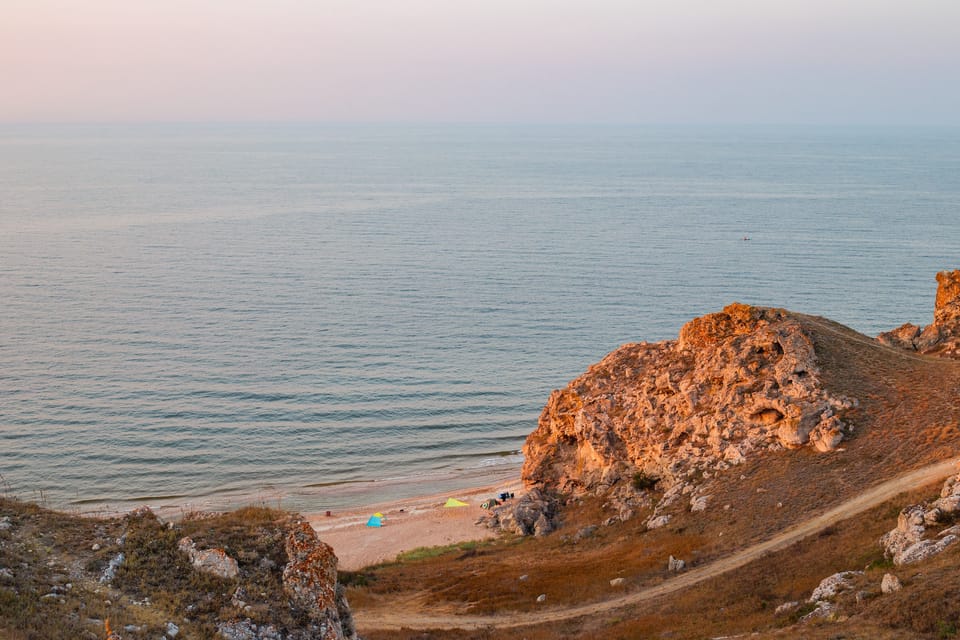Can Kremlin Spending Save Crimea’s Tourist Industry?

Key takeaways from FilterLabs’ analysis:
- Substantial Russian government investments in the Crimean tourism industry have garnered positive local press.
- Official government statistics show that tourism in Crimea has fallen since Russia’s full-scale invasion of Ukraine.
- A FilterLabs investigation found that consumer spending on hotels and airfare in Crimea are down as well.
- Crimea is highly dependent on federal aid, and its declining tourist economy—the leading industry in the region—may be a microcosm of its larger situation, in which Russia may be forced to make difficult decisions about the Black Sea peninsula it annexed.
The Russian government has been subsidizing local industries for some time, but it can be hard to tell what difference—if any—the subsidies are making.
At FilterLabs we use our data platform Talisman to gather and analyze hard-to-find conversational and behavioral data. Putting these together can give us a clearer picture of what’s happening in local economies, and where they might be headed.
For today's newsletter, we're taking a look at Russia-occupied Crimea, where the Russian government has been subsidizing the tourist industry since annexing the Ukrainian peninsula in 2014.
In the summer of 2023 there was a decline in sentiment in local news stories about tourism. Sentiment fell over the summer but rebounded during the early autumn “velvet season,” another popular vacation time for many Russians:
Looking more closely at the news stories, we found that both the summer downturn and the autumn upswing in sentiment reflect economic worries related to the tourist industry. Summer coverage included predictions about the tourist season being “very reduced” and reports of decreased tourist flows. There was concern about the explosion of the Crimean Bridge in mid-July and how it would impact tourism. When sentiment rose again in September, it was largely on news of federal support funds for Crimea’s hurting tourism sector and new federal investment projects to benefit the tourist industry. Clearly, concerns about the tourist economy were on people’s minds.
And with good reason. The (Russia-appointed) government’s official statistics show that tourism in Crimea has fallen significantly from its highs of 7.4 million in 2019 and 9.4 million in 2021. In 2023, it was down to 5.2 million.
Fast forward to 2024. This summer, there were fewer headlines about a lack of tourists or federal subsidies. Sentiment was more stable. Did this mean the tourism industry was humming?
Not exactly. The government reported that the first eight months of 2024 saw 20% increase year-over-year, but that still points to annual totals well below the 2021 high. It appears that tourism in Crimea today remains about where it was a decade ago, despite the funding the government has poured into development projects. Tourists are still coming in large numbers, but volume is lower than the totals the region was seeing before the start of Russia’s “Special Military Operation” in Ukraine in 2022.
And FilterLabs’ behavioral data from the region reveals reduced consumer spending both on Crimean hotels and on airfare:
In both categories, we can see that consumer spending dropped significantly after Russia’s full-scale invasion of Ukraine, and has not recovered. The drop suggests that the government subsidies may be playing a significant role in keeping the local tourism industry afloat.
Domestic tourism is up across Russia, and the government claims it is up in Crimea as well, but that may be in part because government subsidies are making it possible for Crimean hotels to discount their prices by as much as 40% for local residents—and because sanctions and travel restrictions are leaving Russians with few international travel options and thus more likely to book holidays in areas under Russian control.
Crimea is already highly dependent on federal aid and net negative in terms of the amount the region contributes to and receives from the federal budget. (The federal government invested a staggering 1.37 trillion rubles in the peninsula between 2014 and 2022.) So its tourist economy—the leading industry in the region—may be only a microcosm of the larger situation.
But either way, if the Kremlin subsidies went down, the Crimean tourism industry might go with them.
